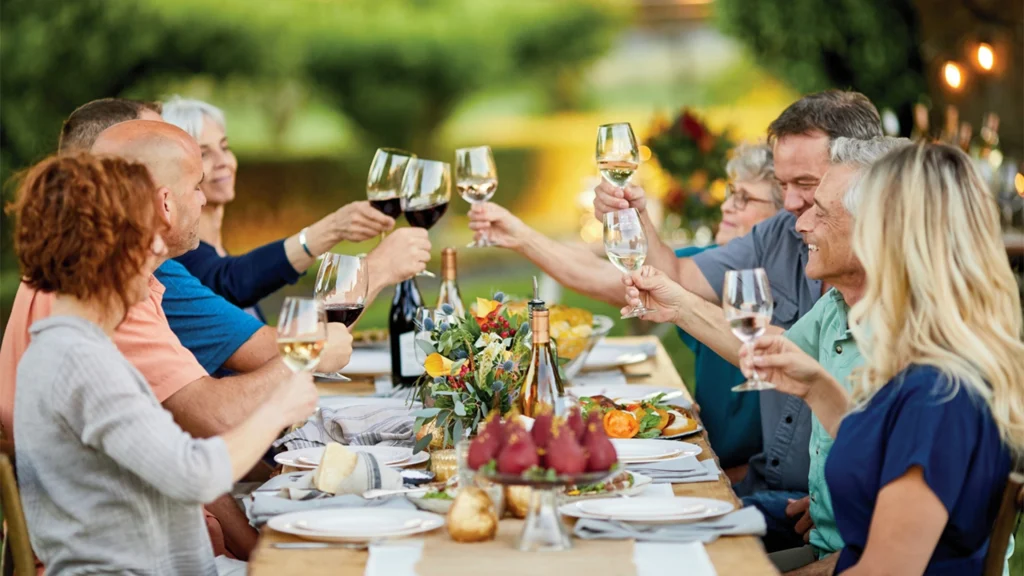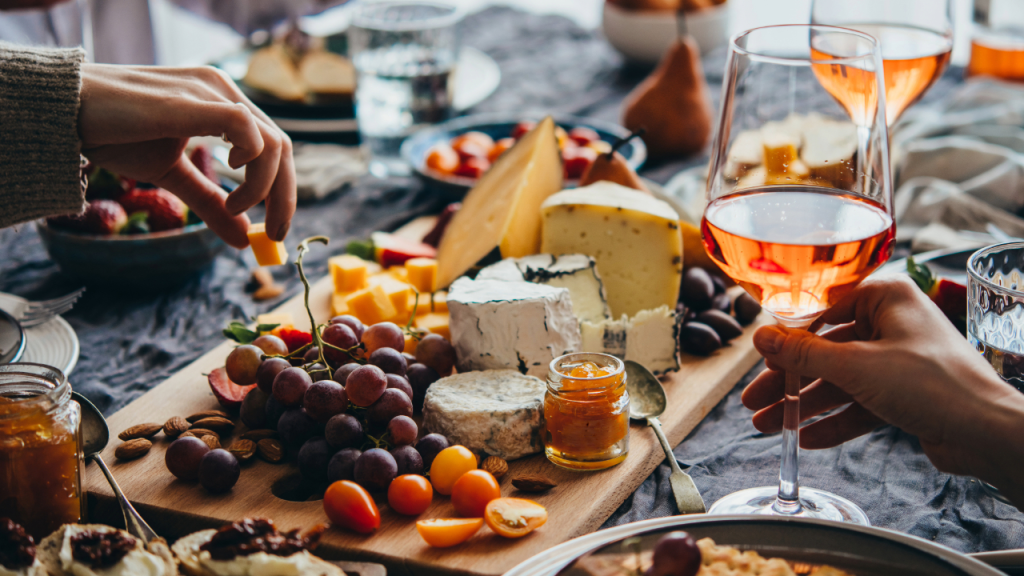Finding the perfect harmony between wine and food can elevate any dining experience from ordinary to extraordinary. This wine and food pairing guide aims to demystify the art of matching flavors, textures, and intensities to create memorable culinary moments. Whether you’re hosting a dinner party or simply enjoying a quiet meal at home, understanding the fundamentals of food and wine compatibility will enhance your appreciation of both.
The Basic Principles of Wine and Food Pairing
The journey to becoming adept at pairing begins with understanding a few fundamental principles that guide successful matches. These concepts form the foundation upon which more complex pairings are built.
Balance of Intensity
Perhaps the most important rule in wine and food pairing is matching intensity levels. Delicate dishes pair best with lighter wines, while robust foods require more powerful wine companions. A subtle white fish might be overwhelmed by a bold Cabernet Sauvignon, just as a hearty beef stew would overpower a delicate Pinot Grigio.
Complementary and Contrasting Flavors
Successful pairings work in one of two ways: they either complement similar flavor profiles or create pleasing contrasts. Complementary pairings match similar characteristics—such as the herbaceous notes in Sauvignon Blanc with herb-forward dishes. Contrasting pairings juxtapose different elements—like pairing sweet dessert wine with salty blue cheese—to create dynamic flavor experiences.
Consider Acid, Fat, Salt, and Sweet
Understanding how these four elements interact with wine is crucial:
- Acidic foods pair well with acidic wines
- Fatty foods are balanced by wines with high acidity or tannins
- Salty foods often pair beautifully with slightly sweet wines
- Sweet foods require wines with equal or greater sweetness
Expert Insights: Sommelier Tips
Professional sommeliers approach wine pairing with both scientific understanding and artistic sensibility. Their experienced palates can detect nuanced flavor interactions that might escape novice tasters. Many experts recommend:
- Considering the dominant flavor in a dish rather than its primary ingredient
- Matching wine to the sauce or preparation method rather than the protein
- Thinking about regional pairings—wines often naturally complement the cuisine of their origin
- Starting with versatile, food-friendly wines like Pinot Noir, Riesling, or sparkling varieties

White Wine Pairing Suggestions
White wines, with their typically higher acidity and absence of tannins, pair wonderfully with many lighter dishes.
Chardonnay
Unoaked Chardonnay: With its clean, mineral characteristics, unoaked Chardonnay complements seafood dishes, particularly shellfish, and pairs beautifully with soft, creamy cheeses.
Oaked Chardonnay: The buttery, vanilla notes of oaked Chardonnay stand up well to richer dishes like lobster with butter sauce, creamy pasta, and roast chicken.
Sauvignon Blanc
The bright acidity and herbaceous qualities of Sauvignon Blanc make it an excellent match for:
- Goat cheese
- Dishes with fresh herbs
- Salads with vinaigrette dressings
- White fish with citrus
- Vegetable-forward dishes
Riesling
Available in dry to sweet styles, Riesling is perhaps the most versatile white wine for food pairing:
- Dry Riesling: Pairs with light fish dishes and vegetable plates
- Off-dry Riesling: Matches beautifully with spicy Asian cuisine
- Sweet Riesling: Complements fruit-based desserts and contrasts nicely with salty courses
Red Wine Food Companions
Red wines, with their varying levels of tannins, body, and fruit characteristics, offer numerous pairing possibilities.
Pinot Noir
The light to medium body and bright acidity of Pinot Noir make it one of the most food-friendly red wines:
- Grilled salmon
- Duck and game birds
- Mushroom dishes
- Charcuterie
- Thanksgiving turkey
Cabernet Sauvignon
Bold and tannic, Cabernet Sauvignon stands up to richly flavored, fatty foods:
- Aged steaks
- Lamb chops
- Hard aged cheeses
- Dark chocolate
Syrah/Shiraz
The peppery, bold character of Syrah pairs wonderfully with:
- Barbecued meats
- Game
- Stews
- Grilled vegetables
- Smoked meats
Sparkling Wine Versatility
Sparkling wines deserve special mention for their exceptional food-pairing versatility. The high acidity and effervescence cut through richness and cleanse the palate between bites.
- Champagne: Pairs classically with oysters but works with everything from fried chicken to popcorn
- Prosecco: Complements light appetizers, fruit-based desserts, and brunch fare
- Cava: Works beautifully with tapas, seafood paellas, and mild cheeses

Dessert Wine Considerations
Sweet wines require careful pairing to avoid either the wine or the dessert being overwhelmed. General guidelines include:
- The wine should be sweeter than the dessert
- Consider complementary flavors (chocolate desserts with chocolate notes in fortified wines)
- Contrasting temperature can create interesting experiences (warm apple pie with chilled ice wine)
Popular dessert wine pairings include:
- Sauternes with foie gras or blue cheese
- Port with chocolate desserts or aged cheeses
- Ice wine with fruit tarts or crème brûlée
Regional Pairings: A Cultural Approach
Many classic pairings evolved naturally over centuries in wine-producing regions, where local wines and cuisine developed in tandem. These time-tested combinations often work beautifully:
- Italian Chianti with tomato-based pasta dishes
- Spanish Albariño with seafood paella
- German Riesling with pork dishes
- French Burgundy with coq au vin
- Argentine Malbec with grilled steaks
Problem-Solving Difficult Pairings
Some foods present particular challenges for wine pairing due to their strong flavors or unusual components.
Challenging Foods and Their Wine Solutions
- Artichokes: These notoriously wine-unfriendly vegetables work best with high-acid, unoaked whites like Sauvignon Blanc
- Asparagus: Try Grüner Veltliner, which often has complementary green notes
- Eggs: Sparkling wine or crisp whites cut through the richness
- Spicy foods: Off-dry whites or rosés with lower alcohol content help tame the heat
- Vinegar-based dishes: Choose very high-acid wines that can stand up to the vinegar

Creating Memorable Pairing Experiences
Beyond the technical aspects of matching flavors and textures, consider these elements that contribute to exceptional wine and food experiences:
Temperature Matters
Serving wine at the appropriate temperature significantly impacts its flavor profile and compatibility with food. Generally:
- Full-bodied reds: 60-65°F (16-18°C)
- Light reds: 55-60°F (13-16°C)
- Full-bodied whites: 50-55°F (10-13°C)
- Light whites and sparkling: 45-50°F (7-10°C)
Glassware Selection
The shape of wine glasses affects aroma concentration and how wine lands on different parts of the palate. While you needn’t have a specific glass for every varietal, having options for red, white, and sparkling wines enhances the experience.
Progression of Pairings
When planning a multi-course meal, consider the progression of both foods and wines:
- Start with lighter dishes and wines
- Move toward more intense flavors
- Finish with sweet offerings
Learning Resources for Further Exploration
For those interested in developing their pairing skills further, many valuable resources exist beyond this guide. The world of culinary arts resources offers extensive education on food and beverage pairing principles, with many institutions providing specialized courses in wine studies.
Practical Tips for Everyday Pairing
Not every meal requires deep analysis or perfect matching. For everyday enjoyment:
- Start with wines you enjoy rather than strictly adhering to “rules”
- Keep versatile wines on hand (like Pinot Noir, dry Riesling, and sparkling wine)
- Consider the dominant flavor in the dish when selecting a wine
- Use the regional pairing approach when in doubt
- Experiment and note which combinations work for your palate
Recommended Resources
To continue your wine and food pairing journey:
- Wine tasting groups can provide opportunities to compare different wines with the same foods
- Cooking classes focused on wine pairing offer hands-on experience
- Restaurant tasting menus with wine pairings demonstrate professional pairing concepts
- Wine apps can provide quick pairing suggestions for specific dishes
Conclusion
The art of wine and food pairing combines science, tradition, and personal preference. While guidelines provide useful starting points, developing your own understanding of how flavors interact creates the most satisfying experiences. Remember that the “perfect” pairing is ultimately the one that brings you pleasure.
As your confidence grows, you’ll likely find yourself moving beyond rigid rules toward a more intuitive approach. The journey of discovering how wine and food can elevate each other is one of the most rewarding aspects of culinary exploration, offering endless opportunities for delightful discoveries.
Frequently Asked Questions
Can you pair white wine with red meat?
While traditional pairings suggest red wine with red meat, many white wines work beautifully with certain preparations. A full-bodied white like an oaked Chardonnay can complement veal, while a robust Viognier might pair well with pork.
What wine pairs best with spicy food?
Generally, wines with some sweetness, lower alcohol, and good acidity work best with spicy foods. Off-dry Riesling, Gewürztraminer, and even slightly sweet rosés can balance the heat without intensifying it.
Is there a universal wine that pairs with almost anything?
Sparkling wines, particularly Champagne and other traditional method sparklers, offer exceptional versatility due to their acidity and effervescence. Among still wines, Pinot Noir and dry Riesling are known for their food-friendly qualities.
